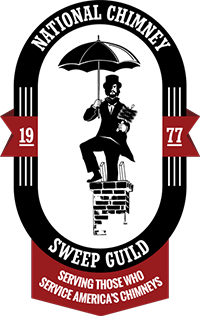Everyone loves the idea of a fireplace keeping things warm and cozy on a winter night. However, how many people actually know what the parts of a chimney are and how they work? Even though you know there are pros like those at Chim Cheroo Chimney Service to take care of your fireplace needs, it’s still important to know how things are put together and how they work so that you know when to give these pros a call!
Parts of a Fireplace
According to the howstuffworks website, these are some of the pieces of a fireplace:
- Hearth: extends beyond the fireplace to catch sparks from the fire
- Surround: protects the walls around the fireplace
- Firebox: where you build the fire
- Flue: the passage that smoke and gases travel through to escape from the house
- Chimney liner: extends the length of the flue and protects the mortar and inside of the house from the smoke and byproducts of the fire
- Chimney: around the flue – keeps the heat of the fire from getting to anything flammable
- Damper: movable covering that separates the firebox from the space above to keep cold air from going into the house when there’s no fire
- Chimney cap: prevents animals, debris, and moisture from going down the chimney and into the house
- Fireplace doors: made of metal or glass which cut off air flow when fireplace isn’t in use
Focus on the Chimney Liner
According to the Chimney Safety Institute of America (CSIA) website, “(A) flue lining in a masonry chimney is defined as ‘A clay, ceramic, or metal conduit installed inside of a chimney, intended to contain the combustion products, direct them to the outside atmosphere, and protect the chimney walls from heat and corrosion.’” Back in the early 1900’s, there weren’t rules on having a chimney liner. However, through the years, it was determined that a chimney liner is so important that most fire codes mandate chimney liners.
The three main reasons for chimney liners, this website goes on to state, are:
- making sure that combustible materials aren’t in danger of igniting from the heat of your fire
- keeping the masonry of your fireplace from the corrosive materials created by fire
- helping your fireplace to run efficiently by allowing your flue to fit correctly
Why Pick Stainless Steel?
Although there are different types of chimney liners to choose from, the Old House Journal website states that many fire-protection experts like stainless steel liners. This is partly because they can be retrofitted into your flue. They come in kits which include availability in a variety of types and sizes. This way you can find a liner to fit most any existing fireplace. Also, these are great for systems that need a flue resize. In addition, stainless steel liners are strong, so you can expect years of service from this type of liner.
If you have questions about replacing your existing chimney liner, the professionals at Chim Cheroo Chimney Service are the people to call. Most of all, their expertise is without equal. They have over 20 years of experience, so they definitely know how to get your chimney relined efficiently and promptly. Give them a call to find out more.



